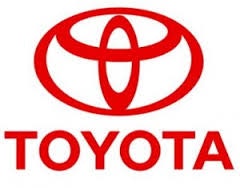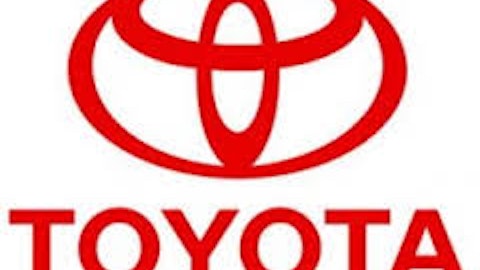An aging workforce, soaring public debt, and an economy that has been stagnant for more than two decades–does that sound like the place you want to invest?
It might be if you’re a believer in Abenomics.
After resigning from office in 2007, Shinzo Abe returned as Japan’s Prime Minister with a bold new economic plan consisting of three “arrows”:
1. Print Money – Force the Bank of Japan into monetary easing to target a 2% inflation rate.
2. Spend Money – Begin new deficit-financed public works projects.
3. Structural Reforms – A series of policies geared at eliminating tariffs and other barriers to trade, as well as encouraging innovation.
While some fear that Abenomics will lead to an eventual rise in interest rates, triggering a Greece-esque debt crisis, most agree that it will help to stimulate the economy and end Japan’s long deflationary cycle.
The Japanese market has already responded in anticipation of this new stimulus with the Nikkei 225 soaring over 30 percent since the election last December, and foreign investors becoming once again excited by the prospect of a revived Japanese economy. Japanese citizens are also bullish on Abenomics, with the once-disgraced Shinzo Abe enjoying a higher approval rating then each of the last 8 Prime Ministers.
With these new stimulus measures come new opportunities and potential risks. We will look at each of the three “arrows” to determine potential investment opportunities, and then we will analyze an alternative way to invest in the Japanese stock market.
Print Money
Towards the beginning of Abe’s term the new PM replaced the previous head of the Bank of Japan (BOJ) with Haruhiko Kuroda, a dovish economist who has long advocated for looser monetary policies and more inflationary measures from the BOJ.
Abe commissioned the new BOJ head with the goal of a 2% inflation target to help kickstart the economy.
By lowering the value of the Yen, Japanese exporters will benefit as their goods will become cheaper to consumers in other countries; this will also encourage savers to either spend or invest their money. Because Japan has an extremely high savings rate there is a lot of money sitting on the sidelines. As inflation picks up and savers begin to worry about inflation eating away at their purchasing power, many will spend money on goods or invest in the Japanese equity market. Both of these actions will further help to stimulate the economy.
With an increase in exports as well as a likely increase in domestic consumption, manufacturers are likely to do well.
Toyota Motor Corporation (ADR) (NYSE:TM) is one manufacturing company that is likely to benefit from Abenomics.
The company does not look cheap, trading at almost 16 times trailing twelve-month earnings, significantly higher than either Ford or GM. This higher multiple, however, is deserved given Toyota Motor Corporation (ADR) (NYSE:TM)’s higher growth expectations. Analysts are expecting $11.05 in earnings next year, giving Toyota a forward multiple of under 11 times earnings, and the weaker Yen should significantly help Toyota Motor Corporation (ADR) (NYSE:TM)’s ability to improve exports. With a boost in exports Toyota Motor Corporation (ADR) (NYSE:TM) should do well in the coming years.
Spend Money
The second of Abe’s three “arrows” is a short-term deficit-financed government spending plan.
The plan calls for a $117 billion stimulus package aimed at increasing disaster relief, public works, and defense.
The investment implications of this second arrow should be fairly obvious. Government contractors as well as companies that provide materials or services to government contractors will do well.
Mitsubishi Heavy Industries is Japan’s largest defense contractor and is involved in many different industries that will benefit from the first and second arrow of Abenomics. It has segments involved in aerospace, shipbuilding, nuclear energy and other industries that will benefit directly and indirectly from Abe’s stimulus spending.
The company, however, trades at over 43 times trailing twelve-month earnings, making it look extremely expensive. In order for the company to be a good investment, management needs to be able to grow their earnings significantly over the next couple of years. This is unlikely to happen. The company does not have a strong track record of growing earnings or revenues, and its large debt may be a drag on the company in the future. While Abenomics should help boost Mitsubishi Heavy Industries, it will be unlikely to do enough to justify the stocks current valuation.
Structural Reforms
The third and final arrow of Shinzo Abe’s plan is a series of structural reforms aimed at encouraging business creation and increasing Japanese business competitiveness. This includes cutting corporate taxes on money spent on R&D, decreasing regulation on M&A activity, eliminating many agricultural subsidies, and signing free trade agreements such as the Trans-Pacific Partnership.
In addition to these items, Abe also pledged to increase by half the amount spent on Japan’s electric industry over the next ten years, which could benefit some power companies.
After the 2011 tsunami and subsequent meltdown of nuclear power plants owned by Tokyo Electric Power Company, nuclear energy fell out of favor with the general public and Tokyo Electric Power Company, or TEPCO for short, was forced to shut down many of its plants and pay millions in reparations to those damaged from the meltdown.
A change is currently underway in terms of nuclear energy. While Japan’s general populace is against nuclear energy, many believe that Abe plans to allow for more nuclear plants to be put back on-line.
If this shift does occur it is possibly that TEPCO will continue to see its losses continue to go down, and may even see positive earnings in a couple of years. That will potentially be a huge boost for the stock.
The main risk, however, is that nuclear energy may not play as prominent a role in Japan’s energy infrastructure as many people had expected it to, and many energy companies may not see huge increases in their ability to build or reopen plants.
When Shinzo Abe made the announcement of his plan for the third arrow of Abenomics, the stock prices power companies such as TEPCO actually went down. Abe had not mentioned nuclear energy during his speech, as many had expected, and instead focused on increasing competition within energy markets. If Abe’s third arrow does not play out exactly as many had expected it to for nuclear energy companies, then shares of TEPCO will likely continue to perform poorly.
While Tokyo Electric Power Company does have the potential to do well, I’m staying away. Too many things have to go right in order for the company to make a good return.
Companies such as Tokyo Electric Power, Mitsubishi Heavy Industries, and Toyota Motor Corporation (ADR) (NYSE:TM) all have the potential to benefit from Abenomics, but there are many things that can go wrong. Each of these companies has many moving parts and trying to figure out which one to invest in can be extremely difficult. Perhaps buying individual stocks is not the best way to profit from Abenomics.
A Better Way to Invest in Japan
While Abenomics provides many potential opportunities in individual names, it may just make more sense to buy an exchange-traded fund (ETF) that invests in a basket of Japanese stocks. There are many to choose from, but the one that will likely benefit the most from Abenomics is the WisdomTree Japan Hedged Equity Fund (NYSEMKT:DXJ). The WisdomTree Japan Hedged Equity Fund (NYSEMKT:DXJ) invests in the Japanese equity markets, and then shorts the Yen against the dollar. This allows investors to benefit from nominal rises in Japan’s stock market while not being hurt by a decline in the value of the Yen.
Because Abenomics relies on a depreciating Yen, investors in individual stocks could see losses even if their investments go up because they will have to convert their Yen to USD at a possibly lower exchange rate than when they bought the stock. The WisdomTree Japan Hedged Equity Fund (NYSEMKT:DXJ) hedges against this risk, as well as the risk involved in only buying individual names.
Sometimes the simpler solution is the best one. And I think this is one of those times. The Japanese stock market is complicated, and picking out individual winners is even more difficult. By buying the DXJ the average investor can gain access to a diversified basket of Japanese stocks and benefit from the three arrows of Abenomics without having to worry about any individual name in their portfolio.
The article Invest in This Country Now for Great Returns originally appeared on Fool.com and is written by Kyle Farrah.
Kyle Farrah has a long position in DXJ. The Motley Fool has no position in any of the stocks mentioned. Kyle is a member of The Motley Fool Blog Network — entries represent the personal opinion of the blogger and are not formally edited.
Copyright © 1995 – 2013 The Motley Fool, LLC. All rights reserved. The Motley Fool has a disclosure policy.



